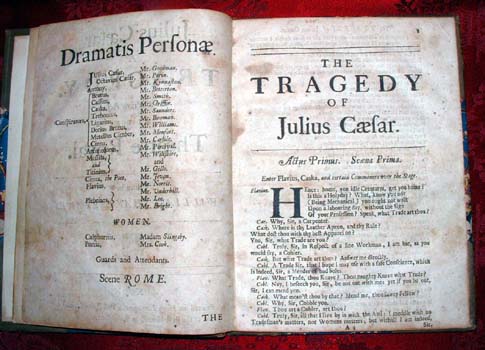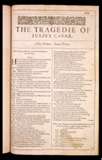The First Four Folios
 |
The Quartos
|
“Restoration Quarto” c.1695 (QU1) John W. Velz on the “Restoration Quartos” |
 |
Matters Theatrical
 |
 |
 |
Killgrew and Davenant were exclusively licensed to operate the King’s and Duke’s playing companies and theatres, respectively, at the Restoration. Recent scholarship theorizes that there were three early revivals of Julius Caesar. See Arthur Scouten on these performances. Thomas Rymer’s A Short View of Tragedy (1693) provides a somewhat singular contemporary opinion on how he thought audiences of his time should perceive plays such as ours—he was not a champion of Shakespeare..
 Seventeenth-Century Editions and Texts
Seventeenth-Century Editions and Texts